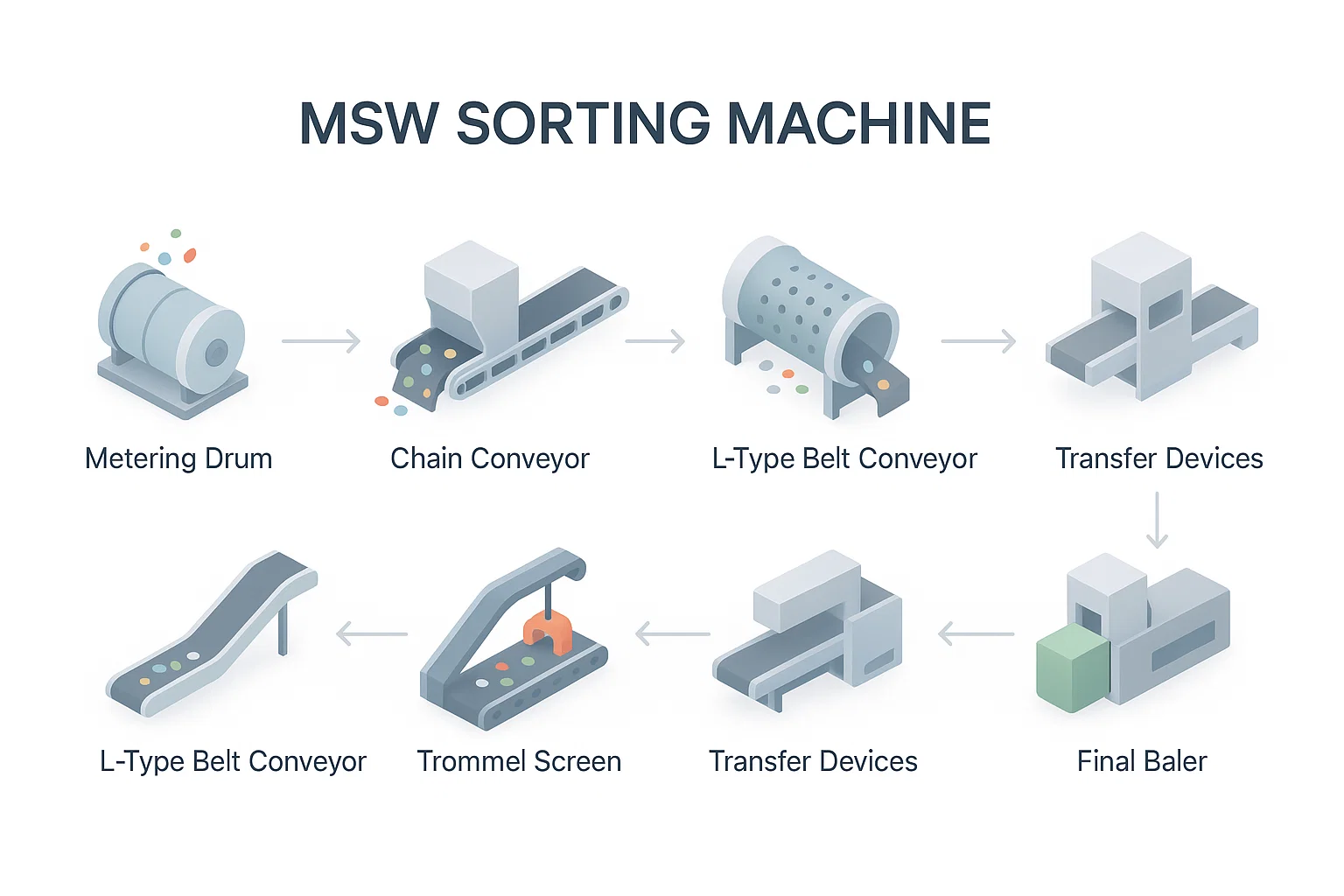The MSW (Municipal Solid Waste) Sorting System is a sophisticated, multi-stage facility designed to efficiently process and separate household waste into valuable recyclable and disposable fractions. The diagram provides a detailed look at the system’s layout, highlighting each step in the sorting process and the key machinery involved.

Key Components and Process Flow
- Metering Drum:
The process begins with the metering drum, which regulates the flow of incoming waste, ensuring a consistent feed rate into the system. This step is crucial for maintaining optimal operational efficiency and preventing system overloads. - Chain Conveyor:
The metered waste is then transported via a robust chain conveyor. This conveyor is designed to handle mixed waste streams and elevate the material to the next processing stage. - Bag Breaker:
At this stage, the bag breaker tears open plastic bags, releasing their contents and allowing for more effective downstream sorting. This mechanical action is essential for exposing recyclables and organic matter that would otherwise remain trapped. - L Type Belt Conveyor:
The broken waste is transferred onto an L type belt conveyor, which moves the material to the trommel. The L-shaped design allows for changes in elevation and direction within the facility layout. - Trommel:
The trommel is a rotating cylindrical screen that separates waste based on size. Smaller particles, such as organic matter and fine debris, fall through the screen, while larger items continue onward for further sorting. - Magnetic Separator:
As indicated in the plan view, a magnetic separator is integrated into the line to extract ferrous metals from the waste stream. This step is vital for recovering valuable metals and preventing contamination of other recyclable fractions. - Transfer Device and Additional Conveyors:
After screening and magnetic separation, the material passes through additional L type belt conveyors and a transfer device, which help distribute and direct different waste fractions to their respective destinations. - Belt Conveyor and Baler:
The final stage involves a belt conveyor that delivers sorted recyclable materials to a baler. The baler compacts these materials into dense, manageable bales for storage, transport, or sale to recycling facilities.
System Layout and Efficiency
The system is designed for both vertical and horizontal integration, as shown in the side and top views. Key dimensions (e.g., 51,411 mm total line length, 6,036 mm and 3,500 mm elevation changes) indicate a large-scale, industrial operation capable of processing high volumes of municipal waste.
Conclusion
The MSW Sorting System depicted in the diagram exemplifies modern waste management technology, combining mechanical, magnetic, and conveyor-based methods to maximize recovery and minimize landfill disposal. Each component plays a specific role in streamlining the sorting process, improving recycling rates, and supporting sustainable waste management practices.



